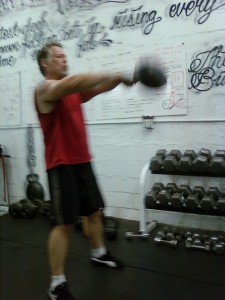On this 4th part of the how to workout for busy people (part 1, part 2, part 3) I’ll focus on building muscle mass. It’s not easy, and don’t expect to Arnold-out in a couple of months.
What makes gaining mass hard
Barring pharmaceutical help, gaining mass is a complex science/art. There’s several types of hypertrophy which take in

Photo by Brian Auer
account different volumes, rep ranges and intensities. More over, building lean muscle mass takes a lot more than just training. The simple formula would be
Eating at a surplus + plenty of rest + working out = more lean muscle mass
And that’s without factoring in hormonal profiles, etc. Of course, this is as simple as I can make it. Focusing on the working out part, the main variable here will be volume (meaning, how much you put up in total). Of course, given that we’re busy people, we’ll focus on density. Density will be taken in acount as volume/time. (BTW, I was introduced to density as a variable through Pavel’s Enter the Kettlebell, so I’m going to pretty much use that definition).
Building muscle for busy people
This whole idea was introduced by Charles Staley (although it’s probably much much older, as most things in the physical training department… Even bro culture), so, full props to him for being a genius.
For this type of workouts you’ll need, at least, a stopwatch, a piece of paper and something to write.
- You’ll pair two antagonist exercises (like Deadlifts and Bench Presses or Squats and Pull-ups).
- You’ll set the timer for 15-20 minutes for compound exercises.
- Set a weight with which you can do 7-10 solid, correct reps and start doing sets of 5.
- Go back and forth between both exercises resting as little as needed. As you fatigue start reducing the reps per set and resting more.
- Take note of how many reps in total you’ve done for each exercise. Strive for at least +1 rep every workout.
- Once you’ve done 30% more reps than the first session with a given weight, add more weight (2,5-5kg/5-10lbs. no more).
- If you still have time after your first 20 minutes (and energy), and insist on adding more exercises. For isolation moves do no more than 10 minutes (pairing curls with tricep extensions, calf raises with wrist exercises… take your pick).
- Curse at me. But curse at Charles Staley more, he made EDT (Escalating Density Training… as it’s called) famous. It really is his fault, not mine.
Unfortunately, this type of training works best with a barbell. There’s no way around it. You can use other implements, but truth be told, they won’t be as effective as.

Any variety of this beautiful exercise should always be in your program. No matter what your goal is.
Photo by US Naval Force Central Command
Share this with busy people you know! With many changes in their lives, their fitness may go to the back burner!
Motus Virtute



